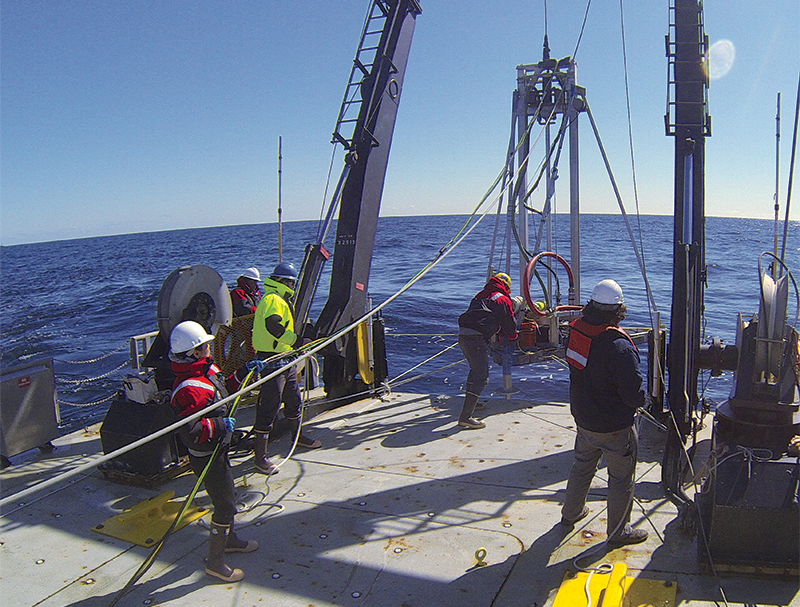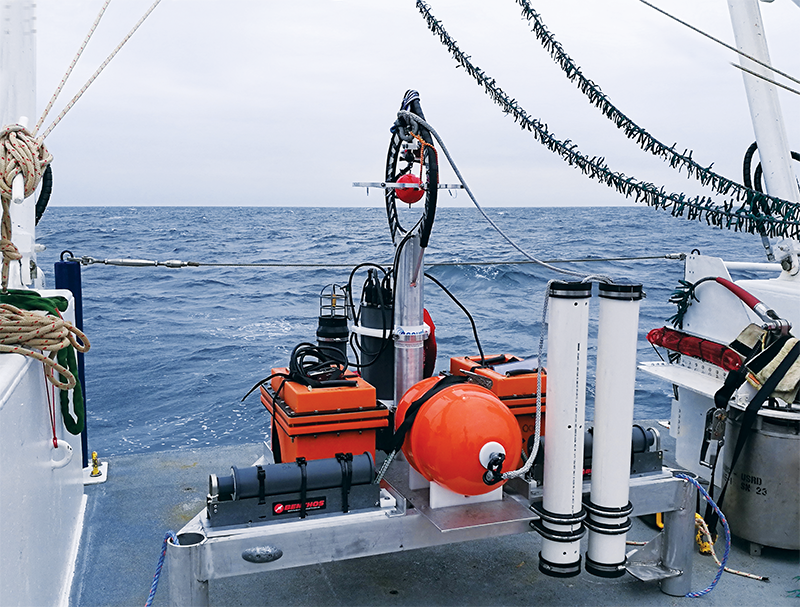
sams The Sediment Acoustic-speed Measurement System is a sediment penetrating instrument with a hydrophone-tipped probe and 10 acoustic sources above the water–sediment interface. This crisscrossing source–receiver arrangement measures directly the sediment sound speed and attenuation as a function of frequency and penetration depth. For the Seabed Characterization Experiment at the 'great mud patch' on the continental shelf south of Martha’s Vineyard, SAMS was deployed to depths greater than ever before. The original on-deck drilling mechanism was not feasible so APL-UW engineers designed an alternative — a two-way water pump that creates a jet or a suction force — to mount on SAMS itself. Senior physicist JIE YANG and the engineering team completed 18 SAMS stations, interrogating the surficial 3 m of the bottom. The surficial mud sound speed was slightly less than water with little variance across its volume and little frequency dependence. "Using SAMS we can address some of the important aspects of sediment inhomogeneity," says Yang, "such as bottom layering structure and sound speed gradients due to sediment consolidation, which affects propagation." 
The Sediment Acoustic-speed Measurement System is a hydrophone-tipped, sediment-penetrating probe and an arm of 10 acoustic sources above the water–sediment interface. This arrangement measures directly sediment sound speed and attenuation as a function of frequency and penetration depth. |

ivar The Intensity Vector Autonomous Recorder is a new relatively small and self-contained instrument developed by APL-UW to advance underwater acoustics research. IVAR's bright red sphere houses a vector acoustic sensor that hears sound differently than a conventional hydrophone. "IVAR records sound pressure and particle velocity at a single point 1 m above the seabed, sensing the direction of the sound," according to Senior Principal Engineer PETER DAHL. The ONR Seabed Characterization Experiment was IVAR's first research deployment. Safely lowered to the muddy seafloor, it was left to record autonomously for several days as acoustic signals were transmitted from research vessels nearby. IVAR provides a more detailed picture of the sound field, such as its modal structure and how this structure is influenced by the muddy seabed. 
The Intensity Vector Autonomous Recorder measures sound pressure and particle velocity at a single point above the seabed with a vector acoustic sensor, thus sensing the direction of the sound. |
|||
| navigate | |





